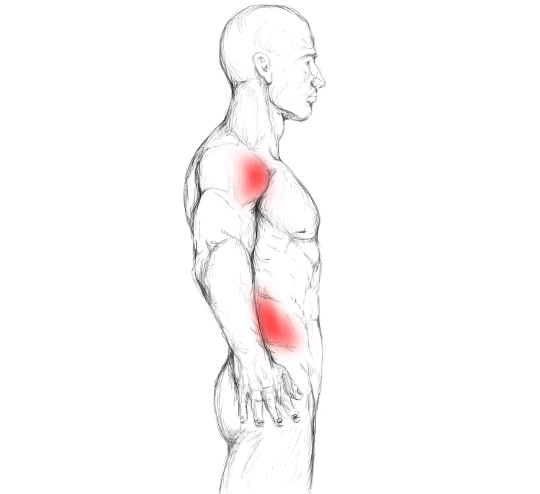1. Pain Patterns & Symptoms of the Latissimus
1.1 Pain patterns
When trigger points are present in your latissimus, they can give you pain right at their location and send pain to other, seemingly unrelated areas of your body.
The upper trigger point – X1, shown under “Attachment Points” – very often triggers lower shoulder blade and mid back pain.
Furthermore, pain can radiate over your shoulder blade down the backside of your arm, until it reaches your 4th and 5th finger.
Although not shown in the pictures, you also could experience pain at the inner side of your arm and hand – also 4th and 5th finger –.
The lower trigger point – X2 – mainly refers pain to the front of your shoulder and to the side of your body just above your hip.
Your latissimus dorsi muscle can contribute to the following pains:
The darker the red in the pictures below, the more common it is to experience pain in those areas when trigger points in the latissimus are present.














